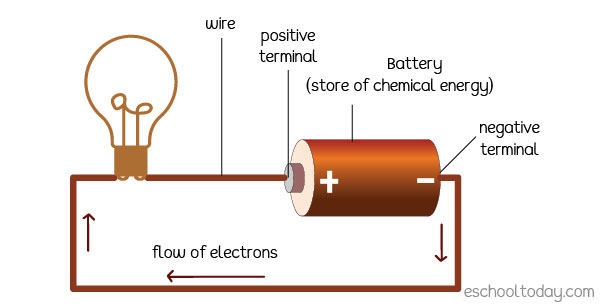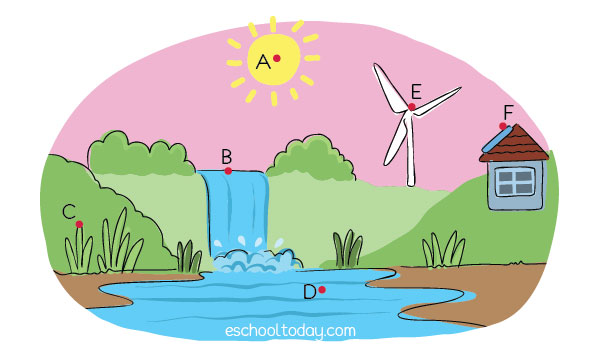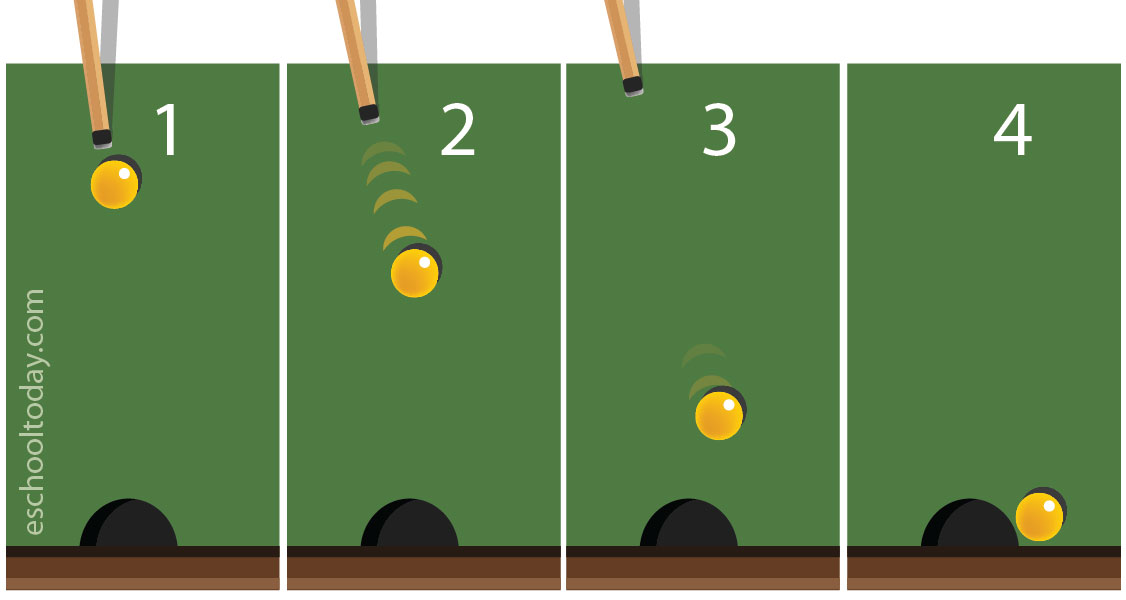- Kinds of energy
What is stored energy, dissipation, dissipated, energy change, etransferred
Energy Stored
Energy cannot be created or destroyed, but it can be saved in various forms. One way to store it is in the form of chemical energy in a battery. When connected to a circuit, energy stored in the battery is released to produce electricity.

If you look at a battery, it will have two ends: a positive terminal and a negative terminal. If you connect the two terminals with wire, a circuit is formed. Electrons will flow through the wire and a current of electricity is produced.
Energy can also be stored in many other ways. Batteries, gasoline, natural gas, food, water towers, a wound-up alarm clock, a thermos flask with hot water, and even poop are all stores of energy. They can be transferred to other kinds of energy.
Energy Transfer
In this diagram, we shall look at a bigger picture of how energy is transferred from one object to another, and from one state to the other. Take a close look and read the notes below:

- A: Sun, source of solar energy. It transfers thermal (heat) and light energy to plants, humans, and animals.
- B: River, streams, and waterfalls moving downstream are all a source of water energy (HydroPower). They are a store of kinetic energy by their movement downstream. Waterfalls also have gravitational energy.
- C: Thermal and light energy from the sun is stored in plants as chemical and potential energy. When humans eat (plants) the stored energy is transferred to us. We use this energy to do work.
- D: Heat energy from the sun is transferred to water bodies to warm the water. The result is stored (thermal) energy. The warm water heats the air over it. Warm air rises, so the air is now in motion. The moving air now has kinetic energy.
- E: Kinetic energy in the moving air is a source of energy called Wind Energy. Wind can turn the blades and generate electrical energy, which we use in our homes.
- F: Energy from the sun is captured as Solar energy by cells and panels on top of our roofs. Solar energy is then transferred into electrical energy that we use to warm our homes and turn on the TV and computers.
Energy Dissipation
Take a look at this simple illustration of a moving ball on a snooker table:

At stage 1, the ball is at rest. It has potential energy but no kinetic energy. Hitting the ball with the snooker cue means you are transferring kinetic energy from the cue to the ball.
When the cue hits the ball at stage 2, it moves very quickly at first and then gradually slows down at stage 3. That means that the kinetic energy of the ball decreases and eventually to zero when the balls come to rest.
With zero external force on the ball at stage 4, the energy of the ball must be conserved. What happened to the kinetic energy? Kinetic energy has been dissipated through friction, and the ball is at rest. Potential energy is retained.
Our research for this topic included these sources:
1. Origin Energy Explorer. What is electricty? www.originenergy.com.au/electricity
2. Energy Education Programmes. www.energyeducation.tx.gov/
3. Energy Quest. wwww.energyquest.ca.gov/index.html
4. EDF Energy. www.edfenergy.com/energyfuture/
5. U.S. Energy Information Administration. Energy Kids. ww.eia.gov/kids/energy.cfm?page=solar_home-basics
6. Energy Saving Trust. www.energysavingtrust.org.uk/Generating-energy/Choosing-a-renewable-technology/Solar-panels-PV
7. Oracle ThinkQuest Education Foundation. www.library.thinkquest.org/5116/sound.htm
